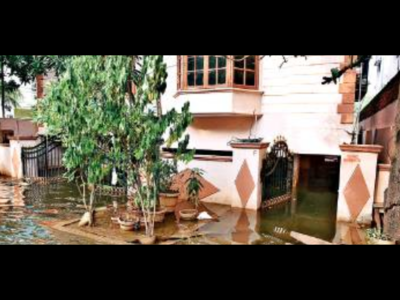Indian Express 28.05.2010
Regulatory body to keep eye on groundwater use in city
Utkarsh Anand Tags : groundwater use check, delhi Posted: Fri May 28 2010, 23:38 hrs
New delhi: As groundwater depletes in the Capital at an alarming rate, Delhi is all set to have its own regulatory body to combat the twin problem of paucity of water and illegal extraction of groundwater. The new policy will be notified next week.A Delhi government affidavit, submitted in the High Court on Wednesday, says it will, after due sanctions from the Ministry of Environment and Forest and endorsement by the Lieutenant-Governor, issue a notification establishing the body, which will also have separate ‘advisory committees’ in all nine districts.
The Delhi Jal Board (DJB), which supplies water to most of the city, and the New Delhi Municipal Council (NDMC) have been termed as ‘competent authorities’ that would act in consonance with the dictates of the advisory committees. The affidavit says the new policy will take care of all local issues and tend to create a body dedicated to monitor and check the unthoughtful extraction of groundwater. The policy restricts individuals or groups from digging borewells for domestic or commercial purposes without prior permission.
Those who already have borewells or tubewells without any official permission would now have to obtain the nod. If the DJB or NDMC decides to give the permission, the individual cases would then be put up before the advisory committee, to be headed by the Deputy Commissioner (Revenue) of the district concerned.
The policy also seeks to do away with the deficiency in the present set-up where unless somebody complains and coaxes the Delhi Police to act against those drawing groundwater illegally, there is no other prosecuting mechanism. The Deputy Commissioner will be empowered to prosecute people after checking violations and sealing illegal wells.
For emergencies, the officials have been asked not to wait for a formal permission from the advisory committee and ensure imminent discontinuation of the drawing of groundwater by seizure of drilling rig and/or borewell and tubewell and also disconnection of power to the machines.
The new regulation further demands an environment-friendly approach from the people, who own big houses/plots, and are looking for permission to dig a borewell. “If the plot size of the building is more than 200 square metres, the permission to draw groundwater shall be subject to the condition that the occupier or owner shall install a rain water harvesting system in the building,” the affidavit read.
For industrial and commercial uses of groundwater, the applicant will not just have to install the rainwater harvesting structure but would also have “to ensure re-use of water in horticulture or cooling or toilet flushing, etc after proper treatment of waste water”.
The policy also states that “genuine agriculturists” would be given the permission to draw groundwater only after a recommendation of Block Development Officer and Agriculture or Irrigation and Flood Control Department.
The court was hearing a PIL seeking removal of a construction in a community groundwater recharge area of the city.
Drying aquifers
In 2009, A team of hydrologists led by NASA scientists had found that groundwater levels in northern India had been declining by as much as 33 cm per year over the past decade due to human activity.
More than 108 cubic kilometres of groundwater disappeared from aquifers in areas of Delhi, Haryana, Punjab and Rajasthan between 2002 and 2008. This is enough water to fill Lake Mead, the largest man-made reservoir in the United States, three times over.


